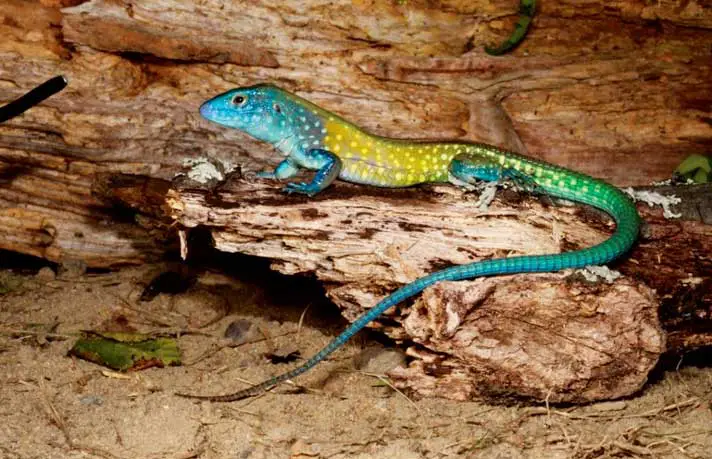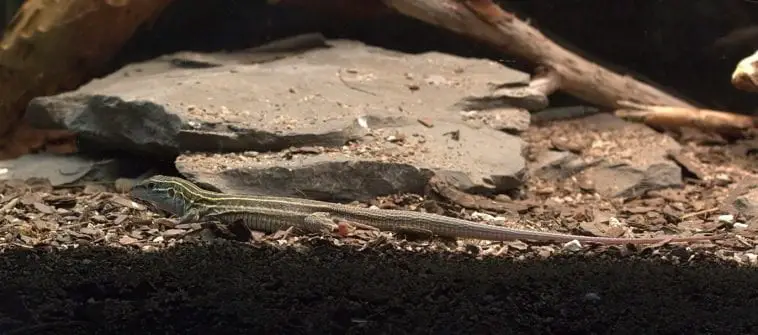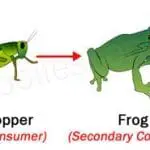If you have not noticed yet, there have been a lot of exotic pet owners that try to take care of anything exotic no matter how big or how expensive the animal may be. Reptiles are among the most popular choices for these exotic pet owners, and these lizards can also be found in the pet trade almost just as easy as most other types of domesticated pets.
However, no matter how many owners try to take care of any kind of exotic pet, even they have their limits. There are certain exotic animals that have become too hard and too difficult to take care of that exotic pet owners have come to cross these reptiles out of their list of animals to take care of. In turn, you can hardly find these animals on the market as breeders themselves have come to realize that it has become pointless to try to breed them. What we are talking about here are the Whiptail Lizards.
Whiptail Lizards are by no means as big and as voracious as Komodo Dragons are. They also do not carry the venom that makes certain lizards and snakes very dangerous to keep. Instead, they are no longer very popular pets to keep for exotic pet owners for the very reason that they are considered some of the worst reptiles to have as pets. But if you want to know why you must first learn more about the Whiptail Lizard.
What is the Whiptail Lizard?
General Information
Whiptail Lizards are some of the most nervous types of lizards on the pet trade and are very quick and energetic on their feet. They are commonly found all across North America but can also be found in South America and in the West Indies. They are named as such precisely because they have long tails that may look like whips. Some of the more popular types of Whiptail Lizards are the Giant Whiptails, which are the larger ones, and the smaller but more colorful ones that belong to the genus Cnemidophorus.
When it comes to their lifespan, one could say that they are not the hardiest and most resilient types of reptiles as they only have about 3 to 5 years to live. However, there are those that can only live for about a year or so. It is also particularly difficult to find these animals on the market as they are not commercially bred by any breeder.
Appearance

The Whiptail Lizard is a slender type of reptile that can be about 3 to 5 inches long, depending on the species. However, these lizards look particularly longer than they are because of their long and slender tails that look like whips. Getting their name from their long tails, the Whiptail lizards have tails that can be longer than the rest of their bodies.
Whiptail Lizards have scales that are small and tiny. However, at their bellies, the scales are larger and look like rows of plates that are arranged well compared to the scales on the outer portion of the bodies of these reptiles. The color scheme of this lizard depends on the species. There are those with dark backs but with a lighter shade of blue on their bellies. The Western Whiptails are adorned with dark spots on bodies that are tan. Meanwhile, male and female Rainbow Whiptails have appearances that are different in the sense that males are blue and have yellow and greenish stripes compared to the brownish female.
Diet
Whiptail Lizard is carnivorous reptiles that almost exclusively feed invertebrates or anything small enough to fit their mouths. They like eating roaches, crickets, and different types of worms such as silkworms, mealworms, and waxworms. These reptiles are not particularly fond of superworms and should be fed with a diet that is focused more on crickets and waxworms. While they may be primarily carnivorous, there will be Whiptail Lizards that feed on the blossom.
The problem with the Whiptail Lizard’s diet is that they tend to eat invertebrates that lack calcium. As such, it is up to you as an owner to try to supplement their diet with calcium by dusting their insects with a calcium supplement. However, in the wild, they get enough UVB due to their exposure to the sun and do not need any sort of calcium supplementation.
Behavior and temperament
The truth of the matter here is that you can hardly find any other type of lizard with the nervousness of the Whiptail Lizard. These reptiles are so alert that any sort of movement from anything they feel is a threat to their survival will rattle them and cause them to suddenly flee for their lives. This is one of the natural traits they have to allow them to survive well in the wild, even though they do not get to live long in the first place. They also tend to be very nervous about the way they go about their business as they always make sure that they are alert about their surroundings no matter what happens.
Also called race runners, the Whiptail Lizards tend to be quite fast and as quick as lightning when it comes to their movements. This is especially true if they feel like they are being threatened as they can dart towards safety in a heartbeat. Any sudden movements on your part and your eyes probably won’t be able to catch how quick these lizards are to run away in fear.
Whiptail Lizards are also quick to dig out of a predicament and are adept at digging through sand to hide from a potential threat. They also use this same kind of speed for hunting their prey, but the one thing that you should take note of is that they may be fast at darting towards their food but tend to have poor aim and may sometimes find themselves with mouths full of sand instead.
Even when they are not basking, the Whiptail Lizard always seems to be quite alert with its surroundings and is well-aware of what is happening regarding all types of motions and noises around these very nervous reptiles. As diurnal creatures, they tend to be awake during the day. When not looking for a place to hide after running away in fear, the Whiptail Lizard is often basking or moving around its habitat but is always as alert as it can be. They still move around quicker than what your eyes can see, but they happen to only move short distances instead of trying to run far away when they are frightened. You can also notice how they like digging through sand in search of food.
Whiptail Lizards are terrestrial creatures and tend to spend their time on the ground almost exclusively even though they may be good at climbing. They also tend to bask longer than most other species of lizards because of how they need to have the optimal body temperature they need when they are hiding. They tend to be at their most alert when they are basking.
However, when they are used to your movements, there might be a chance that Whiptail Lizards will become less tense and nervous. In fact, when they are their best mood, they tend to be friendly animals that will not give you problems regarding their overall demeanor.
Why are they bad pets to keep?
While Whiptail Lizards are not exactly bad pets in the sense of the word because they are not aggressive animals that will attack and are also not venomous reptiles, they still are some of the worst lizards to keep precisely because of their nervous temperament and demeanor.
Here are some of the main reasons why you do not often see them in the pet trade these days:
- They are extremely quick. As mentioned, Whiptail Lizards are so fast that it will be very difficult for you to keep up with their sudden movements. Your eyes might not be able to catch them, and nor will your hands. In that case, they are extremely difficult to catch in the wild. This means that breeders do not have a lot to work with, as they are so difficult to capture. Under captive care, owners find it difficult to form a bond with them outside of their enclosure because of how quick they are to run away to a safe location far away from people.
- They are squirmy and very nervous. Even when caught, the Whiptail Lizard can still display its nervous side by trying to squirm away from your hands instead of just staying docile as other lizards do. And when they feel very threatened, they may even bite you in self-defense. This means that it will be very difficult to keep them in your hands with a firm grip as there is a chance that you will harm them if you try to reposition your grip in a way that allows you to secure them in your hands safely.
- They injure themselves so easily. Under captive care, Whiptail Lizards are still too nervous and alert that they will easily dart away from anything they feel like is a threat. However, they are clumsy runners that do not think about where they ran to when feeling threatened. As such, they are quick to injure themselves when they hit obstacles along the way or whenever they hit crash on the walls of their enclosure.
- They do not live too long. Whiptail Lizards are not the most long-lived reptiles and barely live for more than 3 years. Most owners do not find the purpose of keeping a reptile that may not even live for more than a couple of years.
- They always need to eat. Due to how naturally active they are, Whiptail Lizards have quick metabolisms that provide them the energy they need to stay alert and run away whenever they feel threatened. This means that they require to be fed constantly and almost every day, unlike other reptiles that only require to be fed once every three or so days. For some owners, feeding Whiptail Lizards can be too costly and too much of an effort to do.
There are easier alternatives. Lastly, there are easier pet lizards to keep than the Whiptail Lizard. As such, exotic pet owners no longer see the need to keep Whiptail Lizards since they are simply too much of a hassle to keep compared to other types of reptiles out there.



